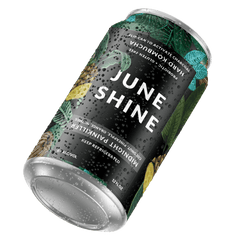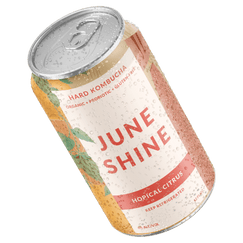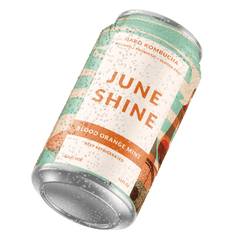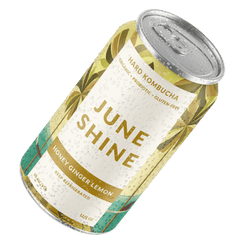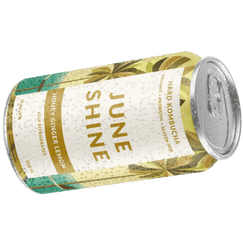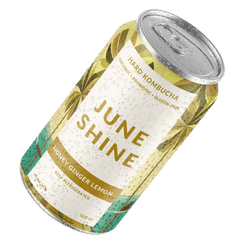What Hops Taste Like and the Definition of Hoppy

If you find yourself seated in any taproom or trendy restaurant in the US, it’s only a matter of time before people start talking beer.
Everyone is commenting how satisfyingly “hoppy” the beer tastes, but you’re not sure if that’s a good or bad thing. You might not even be certain what hops are.
You can smile and nod, but maybe you’re wondering about the mystery of hops and what they add to a brew.
Instead of fumbling your way through the beer list at your next taproom get-together, we’re here to give you the lowdown on hops and the role they play in beer (and other brews)—from flavor and appearance to the brewing process itself.
We’ll also give you an array of words you can use to describe hops in-depth so that you can embrace your inner beer nerd and impress the bartenders.
Finally, we’ll talk about our favorite hops-forward drink that isn’t beer that should put an exciting twist on your evening.
What Are Hops, and What Are They For?
First things first—we need a working definition of hops.
Here are the basics of hops and how they fit into the beer-making process, plus some hop-centric beer styles you probably know.
The Origin and History of Hops
The hop plant goes by the Latin name Humulus lupulus, which translates to small wolf or willow wolf. It’s a resilient twisting vine (or bine, if we’re being technical) that grows abundantly across many regions, from North America to Europe and Southwestern Asia.
The vines of the hop plant aren’t the main attraction—it’s the small female fruits that bud from the leaves of the plant that are the star of the show for beermakers.
If that sounds familiar, it’s because hops are from the group cannabacae, the famous hemp family of flowering plants used for a wide range of purposes. It’s no coincidence that hops are appreciated for amazing aromas, flavors, and recreational uses.
To figure out how hops were first introduced into the beer brewing equation, we have to travel back to the 1st Century A.D. to figure out the story, though the details are a bit fuzzy.
We know that ancient brewers found hops flowers added major depth of flavor and complexity to primitive beers, which were likely not too pleasing to the tastebuds.
Somewhere between the boiling and fermentation process, these old-school craftsmen threw in a bunch of hops and allowed the powerful resins and oils to saturate the liquid before filtering and drinking it.
Of course, it took another few centuries to establish best practices for brewing with hops, and varieties of hops were created to achieve certain flavors based on the profiles of alphas acids that give our favorite beers their distinct characteristics.
We may never know how hops made their way into these ancient brews, but we’re glad they did.
Brew Styles and Hops Content
By the time beer recipes were recorded by medieval European brewmasters, hops were considered one of the four key ingredients, in addition to water, barley (malt), and yeast.
Since then, the world of beer has branched out into thousands of varieties based on unique ingredients, production processes, and regional traditions.
Hops are a central part of today’s beer culture, thanks in big part to the popularity of India Pale Ales (or the notorious IPAs) produced by small breweries across the country. IPAs get all the love from hops fanatics, but there are hops to be found in all the beers you know and love.
In a single keg, the typical IPA uses about a pound of hops, while lagers only use about 0.2 pounds. Pilsners, stouts, and porters use around a third of a pound of hops per keg, and brown ales and pale use about half a pound.
No matter what beer you choose, there’s bound to be some element of hoppy flavor that you should be able to identify and put into words.
Flavor of Hops and Other Descriptors
When you hear the word “hoppy” used to describe beers, it has specific connotations for a brew’s taste. Let’s talk about the definition of this word and some other ways to describe beers beyond “hoppy.”
Hoppy vs. Bitter
Maybe you’ve been led to believe that hoppy means nothing more than bitter, and that the two terms are interchangeable when describing beer.
That is accurate to some degree since hops balance the sweet taste of grain in the brewing process, but there’s a lot more to it.
Beer can contain heaps of hops but may not have a bitter flavor at all. On the other hand, beers with minimal hops can have a distinctively bitter taste simply because of the brewing techniques used and other ingredients included in the recipe.
Just look at the popularity of New England IPAs to see that bitterness doesn’t have to be inseparable from hops. Brewers intentionally add hops late in the brewing process so the hops impart flavors other than bitterness, producing more balanced beers and allowing us to get all the dimensions of flavor that hops provide.
Of course, if you’re looking for a brutally bitter beer that will make your lips pucker, those are available, too. Many people seek that exact experience and want to push their taste buds to the limit.
Citrus, Pine, and Beyond
It’s time to level up your beverage vocabulary so you can enjoy beer on a deeper level and maybe impress some folks along the way.
The next time you pick up a so-called “hoppy” beer, tap into your inner gourmet and explore all the flavors that the brew provides, beyond simple terms like “bitter,” “sour,” or “sweet.”
Rather than limiting yourself, think outside the box and get creative with how you perceive different flavors, even if they don’t necessarily relate to beer at all. That’s how sommeliers (wine experts) work when tasting wine—creative thinking is key.
If you sip a beer and pick up on a fruity flavor, ask yourself what type of fruit you taste. It might be tropical, like pineapple or mango, or citrusy, like clementine or pomegranate.
Perhaps the flavors you experience aren’t even a part of a normal human diet. Hoppy beers are often described as “piney” (yes, like the trees) or herbal, like fresh-cut grass or the edible plants that might grow in your garden.
The point is that you should expand your view of how hops flavor and structure beers because they add much more than you may think.
Know Your IBU Levels
Taste and flavor are mostly psychological and subjective, but modern beers also often feature a numerical metric known as International Bitterness Units, or IBUs.
This scale is used to measure the isohumulone levels in a beer—the amount of acid imparted from hops in the brewing process. If a beer ranks over 80 on the IBU scale, it is considered higher on the scale, so keep an eye out for this number on packages and menus.
Another key concept to learn is “relative bitterness,” which helps us understand why hoppy flavor doesn’t correlate to how bitter a beer may taste.
Just because a beer has a lot of hops and a high IBU, it doesn’t automatically have a bitter taste. What matters more is the relative balance of malts and other ingredients (fruits, herbs, and sweeteners), which determines the flavor profile of the final product.
The takeaway is to never judge a beer based strictly on the number of hops present or the IBU level because so much more goes into the flavor you experience on the palate.
Famous Types of Hops and Flavors
There are hundreds of different varieties of hops used by brewers all over the world, but we’re not saying you have to memorize them all.
To simplify things, we’ve identified the top five types of hops that most commonly make their way into the conversation so that you can recognize the names and have an idea of what to expect before you take a sip.
Cascade
The famous Cascade Mountain Range in Oregon is the birthplace of this legendary type of hops, and you’ve likely tried at least a few beers that feature them.
Pine, grapefruit, and floral aromas are the prominent flavors in Cascade, which makes them perfect for IPAs and regular pale ales.
Centennial
Originating from Washington state, Centennial hops are loaded with citrus and floral flavors. You will find them used most often in blond ales, wheat ales, and American pale ales.
Citra
Citra is a cross between two traditional hop varietals and doubles down on herbal flavors with an essence of tropical passion fruit and lime. It is featured prominently in many IPAs and pale ales.
Galaxy
This variety of hops originates from Australia, featuring a burst of citrus and other fruity flavors.
It makes appearances in many popular saisons, wheat beers, and experimental IPAs.
Simcoe
Known for powerful dry and bitter flavors, Simcoe hops also have plenty of complex stone fruit and piney aromas. It’s a dual-purpose hop, meaning it contains high levels of alphas acids and essential oils.
Hops in Hard Kombucha?
When you think about hops, you probably picture four-packs of craft beers with weird names, featuring crazy colorful artwork and making big claims about IBU levels.
But beer is not the only way to get a taste of quality hops, and those piney, bitter flavors are right at home in other brews.
That’s why we created our Hopical Citrus hard kombucha, featuring the finest Cascade and Simcoe hops. Juicy notes of grapefruit and pineapple offset the piney, floral hops for a sessionable sip that’s like beer, but better.
Enjoy Hops to the Fullest
We’ve only just scratched the surface of how hops taste, the many varieties available, and the countless styles of beer they help create.
As it turns out, other beverages can benefit from hops—not just beer. That goes to show that there’s so much more to discover and learn about hops, so you’ve got to get to tasting.
Sources:
Use of Hops in Brewing | USA Hops
Types of Beer with Lots of Hops | The Brew Project
Bine | Merriam-Webster